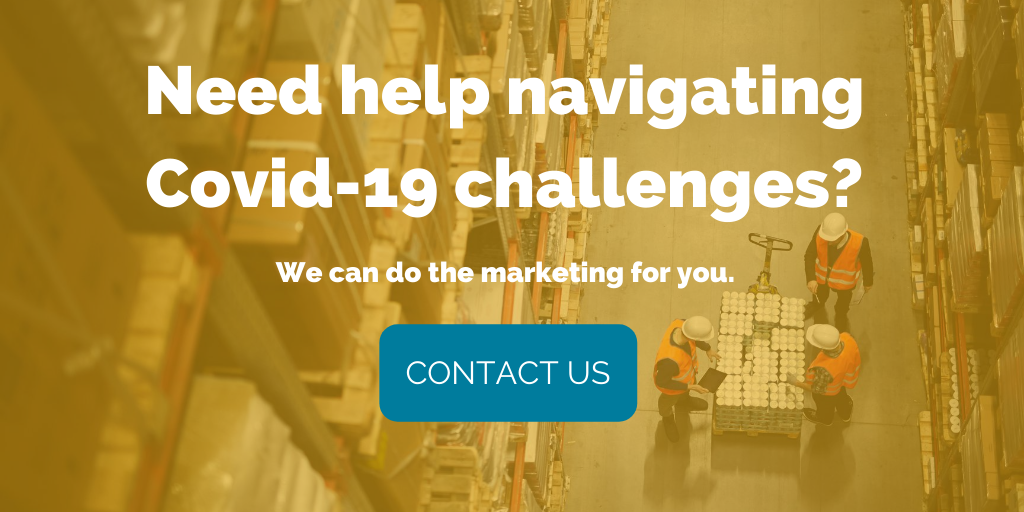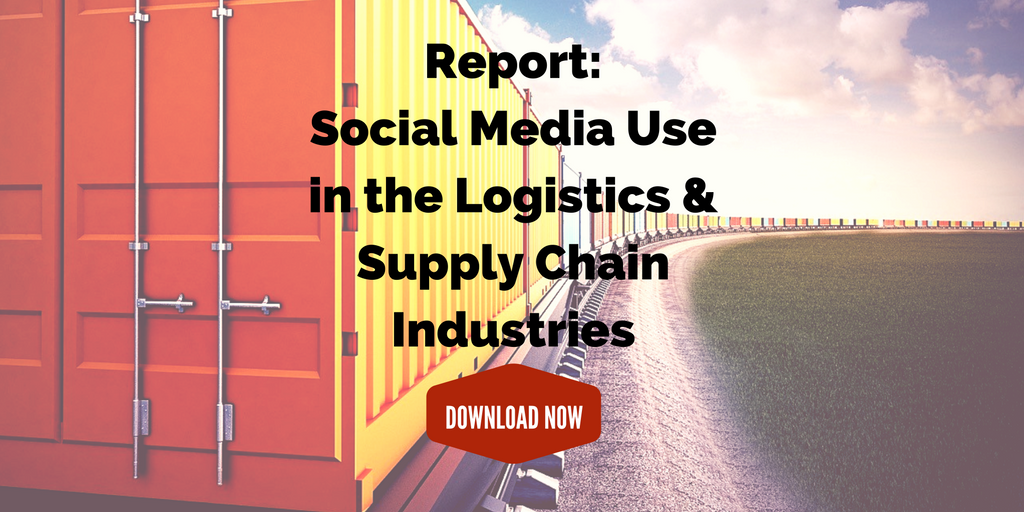
by Jennifer Hart Yim | Jan 9, 2025 | Logistics
Trying to figure out which logistics trade shows and events you should attend in 2025? You’re in the right place! Whether you’re a logistics veteran or planning your first industry event, this list will help you choose the conferences that are actually worth your time (and budget). Below you’ll find all the major shows happening across North America, Europe, and Asia – complete with dates, locations, and an insider’s look on what makes each one special.
Q1 2025 Conferences
- Date: February 10-12, 2025
- Location: Las Vegas, Nevada
- Why Attend: As the first major logistics trade show and event of 2025, Manifest brings together supply chain technology leaders and innovators to showcase the latest in logistics automation, robotics, and AI solutions. The conference is particularly valuable for those interested in emerging technologies and startup solutions in the logistics space.
Learn more about Manifest Vegas >>
RILA Link 2025 Retail Supply Chain Conference
- Date: February 16-19, 2025
- Location: Orlando, Florida
- Why Attend: Essential for retail supply chain professionals, RILA Link focuses on retail-specific logistics challenges and solutions, featuring senior executives from major retailers sharing their insights and strategies. This conference is particularly valuable for networking with retail industry leaders and learning about retail-specific supply chain innovations.
Learn more about RILA >>
TPM Annual Conference
- Date: March 2-5, 2025
- Location: Long Beach, California
- Why Attend: The premier conference for international container shipping, TPM provides unparalleled networking opportunities with ocean carriers, ports, and international logistics providers. This event is crucial for understanding global shipping trends and forming strategic partnerships in the maritime logistics sector.
Learn more about TPM >>
2025 Food Shippers of America Conference
- Date: March 2-5, 2025
- Location: Palm Desert, California
- Why Attend: Focused exclusively on food logistics and transportation, this conference addresses unique challenges in the food supply chain, including cold chain management, food safety compliance, and sustainable food transportation solutions.
Learn more about Food Shippers of America >>
LogiMat
- Date: March 11-13, 2025
- Location: Stuttgart, Germany
- Why Attend: Europe’s largest intralogistics exhibition showcases the latest innovations in material handling, warehouse automation, and supply chain software. This event is particularly valuable for those interested in European market trends and automation technologies.
Learn more about LogiMat >>
ProMat
- Date: March 17-20, 2025
- Location: Chicago, Illinois
- Why Attend: One of North America’s largest manufacturing and supply chain trade shows, ProMat features cutting-edge solutions in manufacturing, distribution, and supply chain equipment. The event includes extensive educational sessions and demonstrations of the latest material handling technologies.
Learn more about ProMat >>
LogiChem EU 2025
- Date: March 18-20, 2025
- Location: Rotterdam, Netherlands
- Why Attend: The leading chemical logistics and supply chain conference in Europe, LogiChem focuses on challenges specific to chemical industry logistics, including safety regulations, sustainability, and specialized transportation requirements.
Learn more about LogiChem EU >>
Q2 2025 Conferences
SITL 2025
- Date: April 1-3, 2025
- Location: Paris, France
- Why Attend: International Week of Transport and Logistics (SITL) is France’s premier logistics event, bringing together European logistics professionals to discuss innovations in transportation, warehouse management, and supply chain optimization.
Learn more about SITL >>
The Logistics World Summit & Expo
- Date: April 2-3, 2025
- Location: Mexico City, Mexico
- Why Attend: The largest logistics event in Latin America, offering insights into regional markets and connecting professionals across the Americas. Particularly valuable for understanding Latin American logistics trends and opportunities.
Learn more about The Logistics World Summit & Expo >>
TIA 2025 Conference
- Date: April 9-12, 2025
- Location: San Antonio, Texas
- Why Attend: The Transportation Intermediaries Association’s annual conference is essential for freight brokers and 3PLs, offering insights into transportation market trends and brokerage best practices.
Learn more about the TIA 2025 Conference >>
The 2025 IWLA Convention & Expo
- Date: May 4-6, 2025
- Location: Tucson, Arizona
- Why Attend: The International Warehouse Logistics Association’s annual event brings together warehouse operators and 3PLs to discuss industry trends, technology innovations, and operational best practices.
Learn more about the IWLA Convention >>
LogiSYM Asia Pacific 2025
- Date: May 20-21, 2025
- Location: Singapore
- Why Attend: The premier logistics and supply chain conference in Asia Pacific, offering insights into regional markets and connecting professionals across the APAC region.
Learn more about LogiSYM Asia Pacific >>
Home Delivery World 2025
- Date: May 21-22, 2025
- Location: Nashville, Tennessee
- Why Attend: Focused on last-mile delivery and e-commerce logistics, this conference addresses the growing challenges and opportunities in retail delivery operations.
Learn more about Home Delivery World >>
transport logistic
- Date: June 2-5, 2025
- Location: Munich, Germany
- Why Attend: One of Europe’s largest transport and logistics trade fairs, featuring comprehensive coverage of global logistics trends and innovations across all transport modes.
Learn more about transport logistic >>
TMSA ELEVATE 2025
- Date: June 8-10, 2025
- Location: Austin, Texas
- Why Attend: Focused on marketing and sales strategies in transportation and logistics, this conference helps professionals better position and promote their services in the market.
Learn more about TMSA Elevate >>
Q3 2025 Conferences
ASCM CHAINge 2025
- Date: September 9-10, 2025
- Location: Columbus, Ohio
- Why Attend: The Association for Supply Chain Management’s conference focuses on supply chain transformation and innovation, featuring case studies and practical implementation strategies.
Learn more about ASCM CHAINge >>
North American Supply Chain Executive Summit
- Date: September 22-24, 2025
- Location: Las Vegas, Nevada
- Why Attend: A premier gathering of supply chain executives focusing on strategic planning, digital transformation, and industry leadership.
Learn more about the North American Supply Chain Executive Summit >>
Q4 2025 Conferences
Council of Supply Chain Management Professionals (CSCMP) EDGE 2025
- Date: October 5-8, 2025
- Location: National Harbor, Maryland
- Why Attend: CSCMP’s annual conference is one of the industry’s largest events, featuring comprehensive educational sessions, impressive keynote speakers, and extensive networking opportunities.
Learn more about CSCMP EDGE >>
Intermodal Europe 2025
- Date: October 21-23, 2025
- Location: Barcelona, Spain
- Why Attend: The leading exhibition and conference for companies associated with container and intermodal industries worldwide, essential for understanding global container logistics trends.
Learn more about Intermodal Europe >>
FreightWaves Future of Freight Festival
- Date: November 4-6, 2025
- Location: Chattanooga, Tennessee
- Why Attend: A dynamic event combining technology demonstrations, market insights, and networking opportunities focused on the future of freight transportation. While you’re in Chattanooga, you must eat a Moon Pie. You can thank me later.
Learn more about FreightWaves Future of Freight >>
Frequently Asked Questions
Which are the biggest logistics conferences in 2025?
The largest events by attendance are CSCMP EDGE (October 5-8), ProMat (March 17-20), and transport logistic Munich (June 2-5). These conferences typically draw thousands of attendees and feature hundreds of exhibitors.
What are the best European logistics conferences in 2025?
Key European events include LogiMat in Stuttgart (March 11-13), Transport logistic in Munich (June 2-5), and Intermodal Europe in Barcelona (October 21-23). You’ll find unique insights into European logistics trends and regulations.
Which conferences focus on supply chain technology?
Manifest (February 10-12) and ProMat (March 17-20) are particularly strong in showcasing new supply chain technologies. These events feature extensive exhibits of robotics, automation, and software solutions.
Are there any virtual attendance options?
Many conferences are expected to offer hybrid attendance options, combining in-person and virtual experiences. Check individual conference websites closer to the event dates for specific virtual attendance offerings and registration details.
Tips for Attending Logistics Conferences
1. Planning Your Conference Schedule
Start planning at least 3-4 months in advance to take advantage of early bird registration rates and ensure accommodation availability. Many conferences offer significant discounts for early registration.
2. Maximizing Networking Opportunities
Most conferences offer dedicated networking sessions and mobile apps to connect with other attendees. Download the conference app in advance and set up your profile to make the most of networking opportunities.
3. Budget Considerations
Conference costs typically include:
- Registration fees ($1,000-$2,500 on average)
- Travel and accommodation
- Additional workshop or certification fees
- Entertainment and networking events
See you all out and about this year!
The 2025 logistics conference calendar offers something for everyone. Whether you’re interested in technology, retail logistics, or international shipping, there’s a conference tailored to your needs. Remember to register early for the best rates and check back regularly for updates about virtual attendance options and agenda details. Many conferences will update their programs throughout the year to address emerging industry trends and market challenges.
Did we miss your favorite one? Let us know and we’ll add it to the list!
Need help with your trade show strategy? Let us know.
Read more:
Last updated: January 2025. Conference details subject to change. Please verify dates and locations with event organizers before making travel arrangements.
Important note: MODEX has no event scheduled for 2025. MODEX will next take place in April 2026.

by Fronetics | May 19, 2020 | Blog, Covid-19, Current Events, Marketing, Strategy, Supply Chain
From answering the most important question to humanizing your company, make it part of your Covid-19 messaging strategy.
If your organization put marketing on pause to deal with the impact of Covid-19, it is time to recharge — thoughtfully. But what should your Covid-19 messaging strategy look like? What should you say and where should you say it?
More than any other industry, Covid-19 thrust the supply chain into the eye of the storm. Now, after a few months of intense disruption, a new normal has set in, giving companies in every supply chain vertical a chance to evaluate how to best position their business at a time of great uncertainty.
Since supply chain partnerships are rarely forged overnight, consider the benefits of not only looking after current clients and stakeholders but also extending a hand to new leads. Faced with unprecedented challenges themselves, these potential prospects may be searching for solutions just like yours.
Question is: What will they find when they come across your website and social channels?
Let’s take a closer look at the key components of a Covid-19 messaging strategy for supply chain companies.
Answer the No. 1 question
Yes, you are open for business. Make it clear on the homepage and update your social media profile with the latest facts. Do not let visitors go searching for that one piece of vital information. Although the immediate urgency and upheaval of the first few weeks of the pandemic is waning, the economic repercussions are just starting to be felt, and the question of whether your organization is still in business needs a quick answer. A pop-up message or banner will get the job done. Include a CTA that leads to a landing page on your organization’s Covid-19 response.
Create a dedicated landing page
What is your organization doing to protect employees and clients? Are you experiencing any service interruptions? Do you serve shelter-in-place areas? The landing page can answer all of those questions. Consider the landing page a resource for your clients and prospects. It may include the company crisis communications plan, a direct message from a company executive, links to helpful resources, and more.
Pick the right topics
Like many others, you may have published an initial statement on the crisis and your dedication to helping clients navigate through it. Where do you go from here? Sounding salesy or overly eager to promote your own supply chain solutions can come across as desperate. And moving on like nothing has happened will likely strike visitors as detached.
Take the perspective of your current clients and prospects — what do they want to know about your services at this time? Their priorities have undoubtedly changed since last year.
Many supply chain companies are uniquely positioned to talk about themselves since they truly are part of the solution to the disruption of goods and services. A provider of flexible warehouse space can publish a post on the importance of building a resilient supply chain that can sustain the impact of unexpected events. And an IoT leader may discuss how its fleet app can keep overworked drivers safe.
The voice of the company should echo throughout your site. Update wording that may seem inappropriate or out of place now. Speak with clarity and authority. Give prospects a sense that you really understand what they are going through (because you do). And, most of all, keep publishing relevant content. A dormant blog or resource page sends the wrong message.
Humanize the company
Being able to connect on a personal level with businesses is gaining in significance. Even in the B2B space, it is a strategy that has worked well for many of our clients. This is even more true during a crisis with such a devastating toll on public health as Covid-19.
We have seen CEOs step up to speak directly on camera to clients or let themselves be interviewed about the company’s crisis response. Team members can be featured, too, in video snippets, showcasing any PPE donations or in-the-field work. Videos and personal stories also tend to foster engagement on social media. Again, keep the tone and content aligned with your target audience.
Final word
Your Covid-19 messaging strategy can have a big impact. Think tactful and empathetic. Stay active and engaged. We know this is a challenging time for so many. Getting your messaging right is a good place to start.


by Fronetics | Jan 9, 2019 | Blog, Content Marketing, Logistics, Marketing, Supply Chain
Email subject lines can make or break an email marketing campaign. Read on for our dos and don’ts for creating an effective subject line.
Email marketing is an unquestionably effective content marketing tactic for B2B businesses. But too often, marketers lose out on potential benefits by focusing too much on internal details while overlooking the importance of the subject line.
It may seem silly, but think about it: When you see an email pop up in your inbox, how do you decide whether or not to open it? If you’re like 47% of all email recipients, you decide to open it based on the subject line alone. And furthermore, if you’re like a whopping 69% of email recipients, you report it as spam purely based on the subject line.
[bctt tweet=”47% of all email recipients decide to open email based on the subject line alone. And if you’re like a whopping 69% of email recipients, you report it as spam purely based on the subject line.” username=”Fronetics”]
Here are some email subject line dos and don’ts.
7 email subject line dos and don’ts
1. Do: be specific; Don’t: be vague
It’s tempting to think that the mystery of a vague subject line will pique the interest of the recipient. But think again. An overly vague teaser is simply annoying and uninteresting. Make sure that the subject line gives an accurate preview of what recipients will find when they open the email.
2. Don’t: send incessant reminders
While it’s great to stay in the forefront of your prospects’ minds, sending too many reminders about the same subject or offer is just plain annoying. Not only that, if your audience doesn’t mark you as spam, their email system might automatically do so anyway.
3. Do: send regular messages at strategic times
It’s true that constant reminders are not your friend — but that doesn’t mean you shouldn’t be sending out regular messages to the various segments of your email list. Just make sure your subject lines show variation based on the content, or else your recipients will think they’re receiving the same message over and over again.
4. Don’t: Use all capital letters
If you’re sending someone a message in all capitals, it’s the equivalent of yelling at them. Too many marketers think that the caps-lock is a sure way to capture a reader’s attention. In fact, it’s much more likely that they will send you straight to the trash.
5. Do: Personalize
Personalizing marketing emails increases open rates, click-throughs, and revenue. But it’s not as simple as just addressing recipients by name. We’ve written in detail about how to personalize marketing emails, but suffice it to say that personalized subject lines mean that users are 22% more likely to open your emails. The more information you track in your email database, the easier it will be to target your emails to your readers, making them feel that they are being personally addressed.
6. Don’t: Be sloppy
You’d be surprised how often people make these 5 email subject line mistakes. For example, misspellings, poor grammar, and excessive use of punctuation can make your open rates plummet. Check out our list — and don’t fall into the trap!
7. Do: Use Psychology
If you’re not up on the latest internet jargon, we’ve got one for you: FOMO, the “fear of missing out,” can be a powerful motivator of user behavior. While vague subject lines won’t work, using phrases like “last day to enter…” or “don’t miss out…” make your readers more likely to open your emails, simply because of FOMO.
A bad email subject line is a sure way to cripple otherwise well-thought-out email marketing tactics. But a good subject line can boost engagement, increase open and click-through rates, and spell more conversions.
Related posts:


by Fronetics | Dec 3, 2018 | Blog, Content Marketing, Logistics, Marketing, Social Media, Supply Chain
Social media is a valuable tool for businesses, but only if they use it to their best advantage and avoid these three common mistakes.
81% of small and medium businesses use a social platform. And we all understand why. By 2019, it is estimated that there will be around 2.77 billion social media users around the globe. That’s a lot of potential customers.
[bctt tweet=”There’s no disputing social media is an effective way to increase brand awareness and generate leads. But it can be fairly useless if your company isn’t doing it right.” username=”Fronetics”]
So, there’s no question as to why companies are jumping on the social media bandwagon. And there’s no disputing social media is an effective way to increase brand awareness and generate leads. But it can be fairly useless if your company isn’t doing it right.
Top three social media mistakes companies make
Mistake #1: Using objectives instead of strategy
Social media platforms are continually making changes and updates to improve the user experience. In order to weather these changes and keep your audience engaged, it’s imperative to have a clear strategy that includes types of content, frequency, and pillar topics.. Posts should reflect your brand, so make sure posts follow style guidelines and reflect your specific tone.
A strategy will also help prove ROI. Social Media Examiner’s 2018 Social Media Marketing Industry Report found that only 44% of marketers agree that they know how to measure social media ROI. That means two-thirds of marketers don’t know whether or how much their marketing efforts are paying off when it comes to the use of social media. A strategy that incorporates defined goals, tracking and measuring will help prove data-driven ROI and improve your social media presence.
Mistake #2: Using the most popular social media platforms
Not all social media platforms are created equal. In fact, all social media channels have a differentiating quality that makes them appealing to specific audiences. Start by identifying where your target audience is spending their time. For example, 81% of millennials view their Twitter account on a daily basis. If your company is looking to capture millennials as leads, your social media efforts should certainly include Twitter.
Once you’ve determined where you should be posting, concentrate on creating content that caters to those specific platforms. Lots of companies post the same content across all of the apps they use. We understand how easy that is for marketers, especially with automation tools. But the foundation of social engagement is authenticity, something that is hard to achieve when posts are the same across all channels. Work to create content — including video and images — that caters to specific platforms to build brand awareness and loyalty.
Mistake #3: Promoting instead of connecting
Social media is all about engagement. Users don’t want to engage with brands that are pushing their products and services. Users want informative, interesting, and yes, even fun content. Companies need to focus on creating content that leaves their users wanting more.
Companies that are succeeding on social media are finding innovative and creative ways to relate to users. When you engage and get users involved in your story, you create long-lasting customer relationships. Storytelling creates an emotional bond with your company and drives brand loyalty.
Greg Hadden, executive creative director of Motive Made Studios, sums up the power of connecting with users: “What often gets lost is the fact that good storytelling is potent stuff. It has the power to make people want to believe and to belong, which is the goal of all storytellers. We’re all selling something, be it an idea, an exploration of the human condition, or say, a vacuum cleaner. It’s no mistake perhaps that good stories often create products.”
Final thoughts
Social media platforms are a powerful resource that can help your business grow. But they have to be used correctly. Creating a documented strategy will help shape your brand’s social media presence and give you milestones to test and tweak your progress. Need help creating a social media strategy? Let us help.
Related posts:


by Fronetics | Jan 18, 2018 | Blog, Content Marketing, Marketing
With a high correlation between publishing frequency and web traffic and leads, you need to publish blog content more often to boost lead generation efforts.
Here are Fronetics, most of our clients are sales-driven. If a client’s business goals include earning leads, we are sure to align the client’s content strategy with that objective. One of the most effective ways to increase the number of leads your website attracts is to increase the frequency with which you publish content.
It seems simple, right? The more often you publish blog content, the more traffic and leads you’ll get. Search engines consider posting frequency in their rankings. What’s more, every time you post, you create a new opportunity to be found, shared, and linked by other sites.
The more you publish blog content, the more they’ll read.
Recent studies have shed light on the relationship between publishing frequently and increased web traffic and leads:
- HubSpot’s benchmarking data shows that blogs that publish 16+ times per month receive 3.5x more traffic than those that publish weekly or less often.
- From the same report, companies that publish 16+ blog posts per month get about 4.5X more leads than companies that publish between 0-4 monthly posts.
- Curata’s survey of 400+ marketers found that 90.5% of the most successful business blogs (over 10,000 views per month) publish at least once a week.
But we know there are challenges to posting frequently.
Publishing blog content frequently comes with its own set of challenges. Time is the biggest obstacle we hear from our clients. Good blogging should be more of a conversation than a press release, but dialogue takes time to create. It can also require additional time to respond to readers’ questions and comments.
The other big challenge is quality. When you’re producing more and more content, it’s easy to let the quality of your pieces slip. You want to make sure the content on your blog is relevant, informative and engaging. It can be difficult to balance publishing frequently and maintaining value and quality.
So how do you find the balance?
Start small. We often encourage our clients to publish blog content just one more time per week. Though some are skeptical of the impact this will have on their traffic and lead-generation efforts, they inevitably find that such a small step can make a big difference.
And no, you don’t have to be a Fortune 500 company to start seeing the impact of your blog posts on your leads. The HubSpot benchmarking report found that increasing posting frequency had the biggest impact on smaller businesses: Companies with 10 or fewer employees that published 11+ posts per month had almost 3X more traffic than companies publishing 0-1 monthly posts, and about 2X as much traffic as those publishing 2-5 monthly posts.
Take one client of ours for example. We suggested moving from publishing one post to two posts per week. The client was unsure this would have any impact, especially for a company in the supply chain industry. But the immediate results spoke for themselves. After just one month, traffic increased by 23%, sales leads doubled, and the client landed a new customer.
Try our suggestion and publish blog content one more time per week, then let us know how it works out for you. We’d love to hear about your success.
Related posts:
SaveSave








